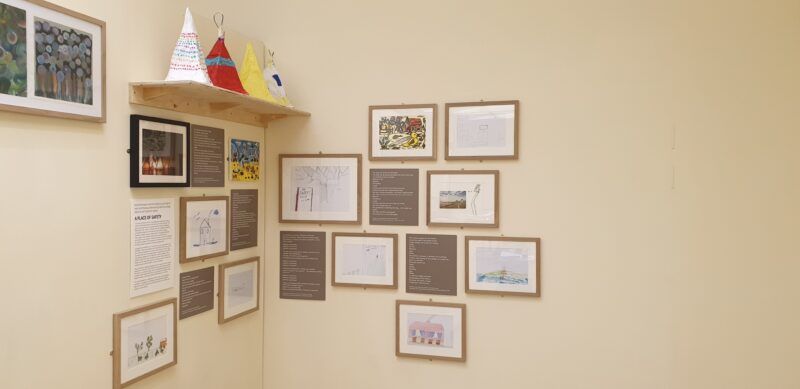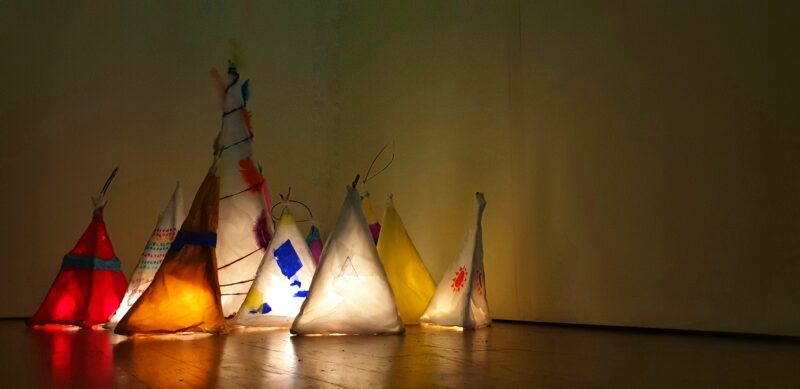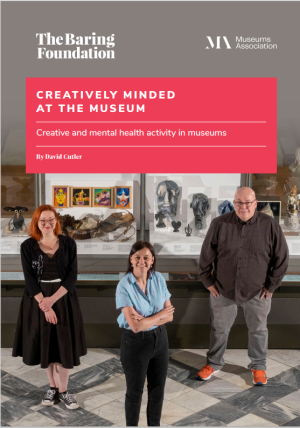In this blog, Jemma Channing, the Health and Wellbeing Coordinator based at The Beaney House of Art and Knowledge, introduces her work with people with mental health problems and their partnership with Kent and Medway Partnership NHS Trust. Jemma is an artist and an occupational therapist with experience working on mental health wards.
This blog was first published as a case study in our report Creatively Minded at the Museum.
The Beaney House of Art and Knowledge is a museum, gallery and library in the heart of historic Canterbury, Kent. Since reopening in 2012 the museum has embedded health and wellbeing across its activities.
The museum uses the varied collection as a part of a diverse Health and Wellbeing programme that encourages everyone to get involved. With a carefully designed programme and working in partnership with health and social care organisations to design accessible, relevant and enjoyable activities, the museum is able to support everyone to engage with culture and experience the positive impact it can have on wellbeing.
The museum has worked with people with mental health conditions historically, working with community organisations to deliver events and exhibitions which support people with mental health conditions to engage whilst also shining a light on the issues affecting mental illness for our wider visitor population.
Throughout the Covid-19 pandemic, we were able to innovate our offer to engage people in their homes in an effort to reduce loneliness, which we know can have a severe negative impact on wellbeing. Additionally, we were aware that ward based mental health patients would be experiencing additional difficulties, unable to leave the ward for trips or have visitors due to the Covid-19 restrictions, in addition to existing restrictions on their activities.
About the project
During the lockdowns we worked with Kent and Medway Partnership NHS Trust, our local NHS mental health service, through their psychology teams, to loan object handling boxes to the wards. The boxes were changed regularly and staff were provided with information and activities. During the lockdowns there were 1,800 engagements across six wards over 12 months. Feedback from patients and staff was positive, with patients reporting that they enjoyed the opportunity to take part in activities they wouldn’t normally do and with staff reporting that patients who usually weren’t engaged with ward activities were participating in loan box sessions. Patients enjoyed sessions so much that they started asking for specific loan boxes covering different periods of history and reported they looked forward to the sessions.
We then decided to put on an exhibition about mental health in light of the current issues facing the community around us, and nationally. The exhibition ‘A Place of Safety’ looked at how mental illness had been conceptualised and treated, with a particular focus on asylums as a place of safety, and what this meant in practice.

It was important from the outset that the exhibition had input from mental health service users as well as curators and mental health professionals. All of the contemporary art in the exhibition was by artists with lived experience of a range of mental health conditions including depression, anxiety and psychosis.
With the place of treatment the focus of the exhibition, we also wanted to ensure that people currently in hospital were able to participate and share their views, and approached Kent and Medway Partnership NHS Trust to build on our existing partnership to enable patients to participate in the exhibition.
Patients had facilitated sessions on the ward using images of artworks from the collection alongside objects from the museum’s collections from St Augustine hospital, previously the county asylum, which closed in 1993. Using these artefacts, the patients had a facilitated discussion and object handling session, followed by a creative activity which explored what a place of safety meant to them. Providing cultural engagement away from the museum for people who would not be able to visit made it more accessible, and gave the patients an opportunity to talk about their experiences, especially as many patients and staff remembered the old St Augustine hospital. Both staff and patients took part in the workshops.
Patients were initially supported to write poetry, but many of the patients continued their sessions self directed, producing paintings, drawings and lanterns for the exhibition. These works were displayed in the exhibition alongside works by Louis Wain, Richard Dadd, Dolly Sen and Liz Atkin.
During the process, we met with the project manager overseeing the design of a new mental health ward in the region. We were able to gather feedback from patients and staff and cascade this to the team responsible for the ward build.
Working in partnership with staff from Kent and Medway Museums Partnership, patients from every participating ward were supported to visit the exhibition with staff to see their work and spend some time in the museum.

Feedback from patients and staff was overwhelmingly positive. Participation in the object handling sessions was documented by psychology staff using quantitative data and thematic analysis who found that:
- 90% of ward patients engaged with the ward based activity
- 88% of patients felt that it gave them an opportunity to connect with other patients and staff on the ward
- 96% of patients reported that they felt positive about their work being exhibited in The Beaney
- 92% of patients reported that engaging with object handling and creative activities was a positive experience.
What next?
We will be continuing our partnership with the Trust to build on the positive outcomes already achieved. Patients and staff both identified a lack of services to bridge the gap between discharge from the ward and resettling at home. The museum is now working with the Trust’s service improvement team to look at how services can be developed which support patients post-discharge by providing activities at the museum which support their recovery and integration into the community.
Additionally, we will be focusing on widening participation for different service user groups including undertaking projects with the Neuropsychology and Early Intervention in Psychosis teams.
